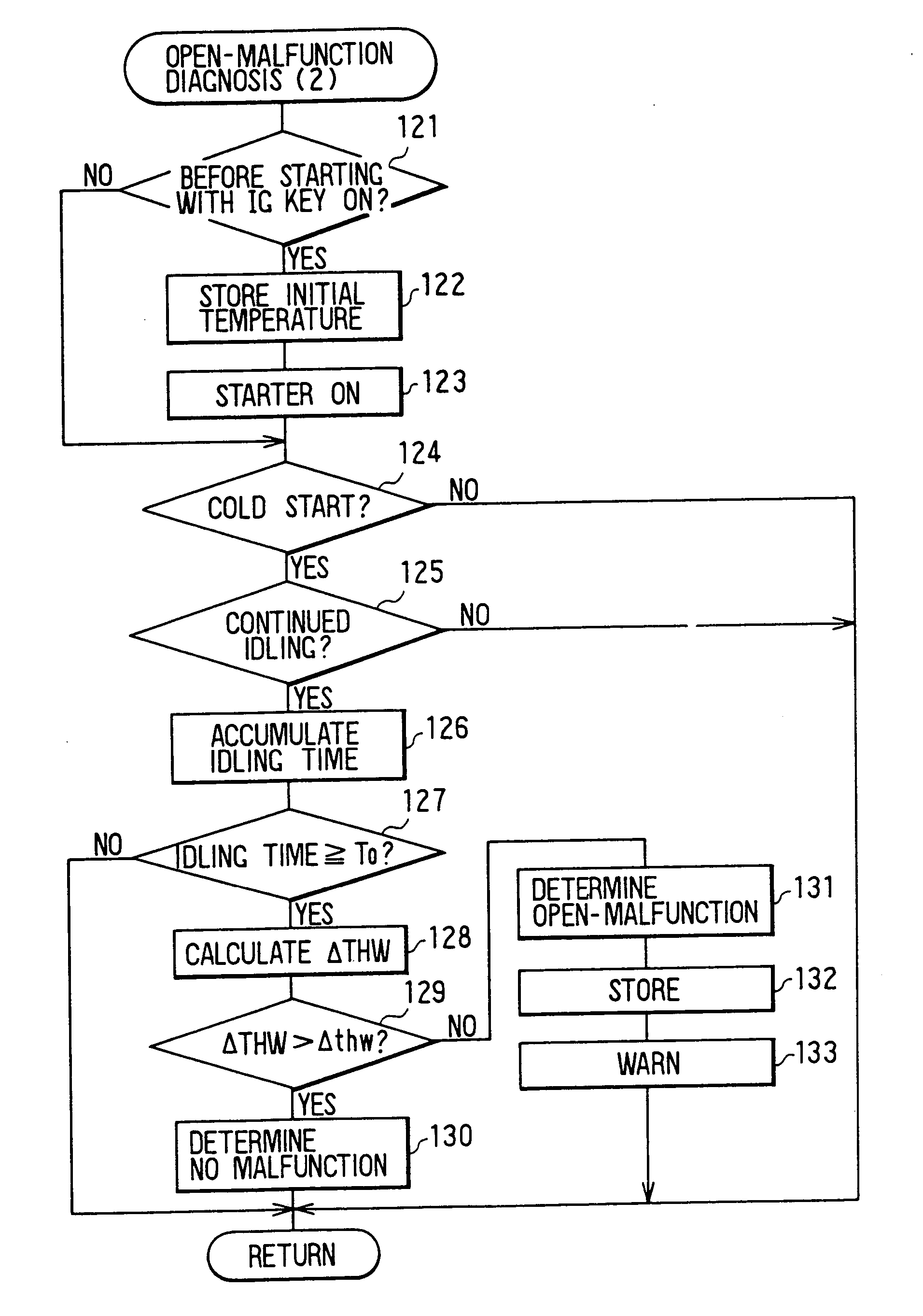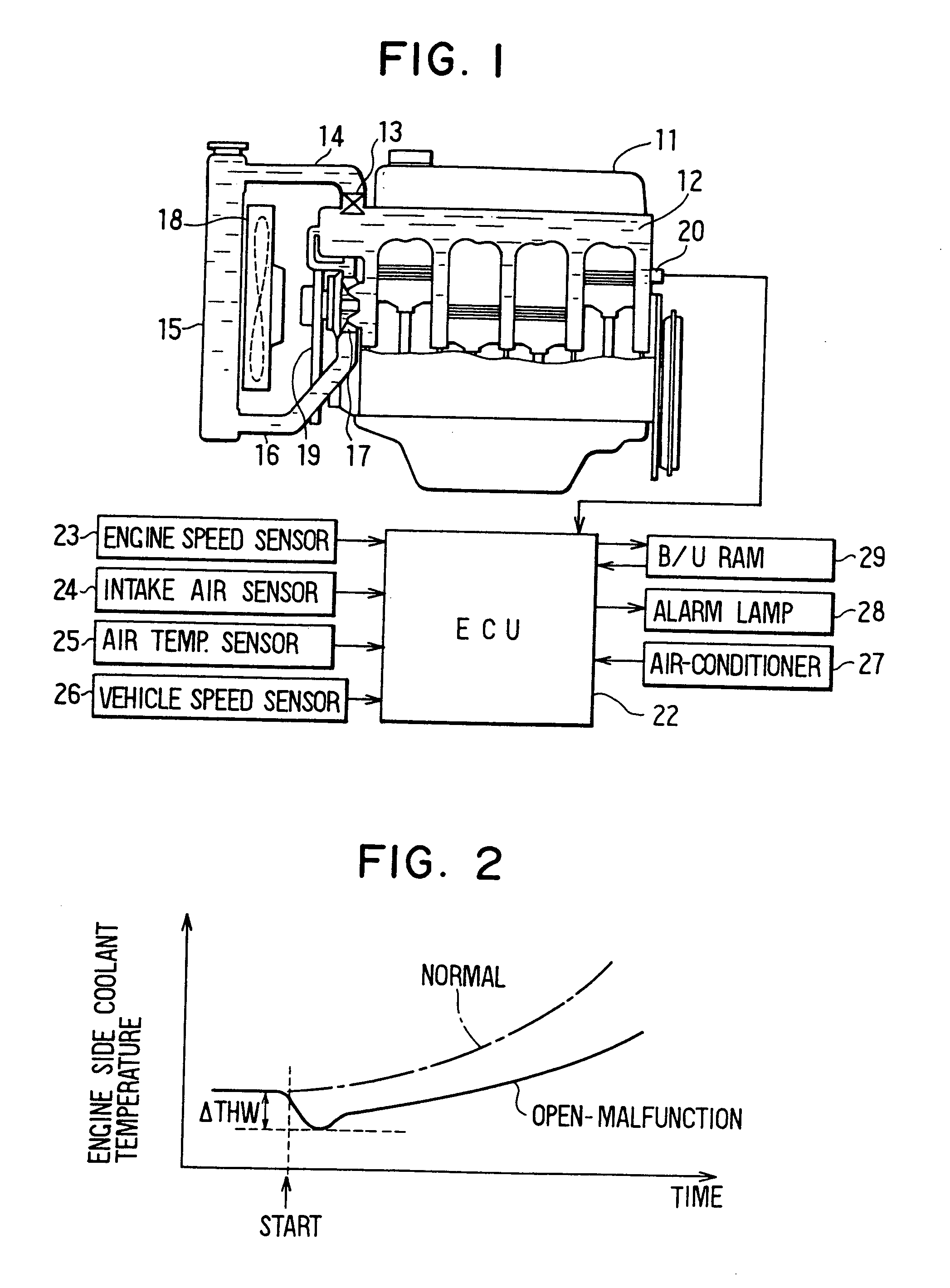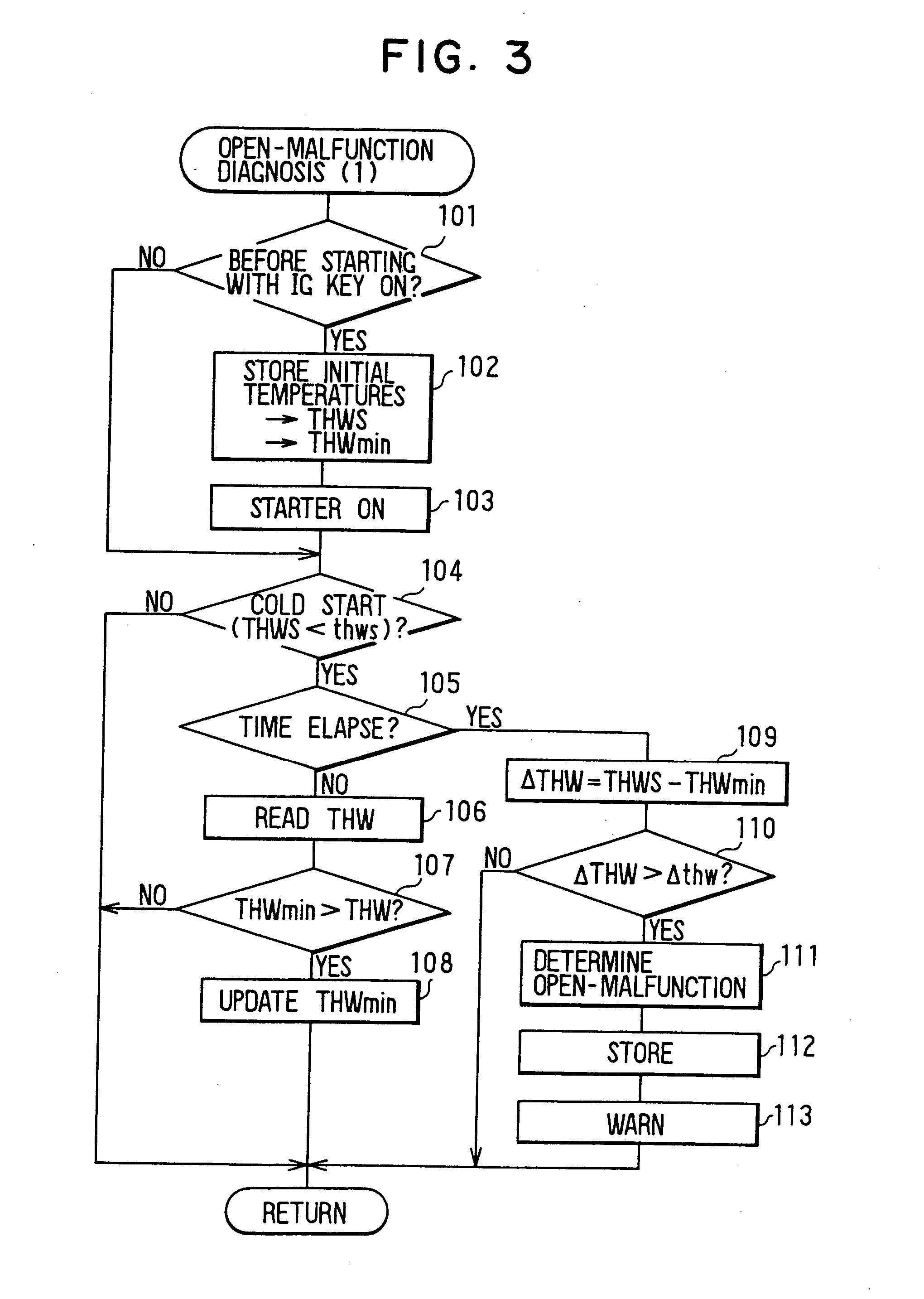Thermostat malfunction detecting system for engine cooling system
a technology of malfunction detection and engine cooling, which is applied in the direction of heat measurement, electric control, instruments, etc., can solve the problems of overheating of the engine in the end, increasing the fuel consumption and noxious exhaust, and increasing the noxious exhaust emission, so as to reduce the cost, reduce the cost, and reduce the cost
- Summary
- Abstract
- Description
- Claims
- Application Information
AI Technical Summary
Benefits of technology
Problems solved by technology
Method used
Image
Examples
first embodiment
[0057] In a cooling system of an engine shown in FIG. 1, a water jacket 12 is provided within a cylinder block and a cylinder head of an engine 11 and a coolant (cooling water) is supplied within the water jacket 12. A thermostat 13 is provided at the outlet part of the water jacket 12 so that the high temperature coolant which passes through the thermostat 13 is sent to a radiator 15 via a coolant circulating path 14. The coolant whose heat has been radiated by the radiator 15 and whose temperature has dropped is returned to the water jacket 12 via a coolant circulating path 16. Accordingly, when a valve within the thermostat 13 is opened, the coolant circulates through the path of the water jacket 12, the thermostat 13, the coolant circulating path 14, the radiator 15, the coolant circulating path 16 and the water jacket 12 to cool and maintain the engine 11 to a required temperature.
[0058] A water pump 17 is provided at the inlet of the water jacket 12. It is rotationally driven...
second embodiment
Modifications of Second Embodiment
[0160] Alternatively to the second embodiment, the diagnosis whether the thermostat 13 has the open-malfunction / closure-malfunction is implemented based on the rate of change of temperature of the engine side coolant temperature Te and the radiator side coolant temperature Tr in this modification shown in FIGS. 29 and 30.
[0161] Similarly to the case shown in FIG. 23, the open-malfunction diagnosing program shown in FIG. 29 executes the processes for diagnosing the open-malfunction on and after Step 2103a when it is the cold start and the open-malfunction diagnosing conditions hold in Steps 2101 and 2102. The open-malfunction diagnosing conditions are the same as those in the second embodiment. In diagnosing the open-malfunction, the rate of change of engine side coolant temperature ΔTe calculated from an absolute value of the difference between the previous engine side coolant temperature Te(i−1) and the current engine side coolant temperature Te(i...
third embodiment
Modification of Third Embodiment
[0190] A modification in which the third embodiment is applied to a vehicle provided with an electronic throttle system will be explained below based on FIGS. 35 through 40. As described before, when the thermostat 13 operates normally, the coolant temperature THW is controlled almost within the temperature range from the thermostat closing temperature to the thermostat opening temperature (required coolant temperature range) and the state in which the coolant temperature THW is out of the required coolant temperature range will not continue for a long time in the normal operating state.
[0191] Based on this point, it is determined that the thermostat 13 has the closure-malfunction in which it is kept closed when the coolant temperature THW continuously rises up even when the predetermined time To has elapsed since when the coolant temperature THW has risen more than the thermostat opening temperature as shown in FIG. 39 in this modification. Further,...
PUM
 Login to View More
Login to View More Abstract
Description
Claims
Application Information
 Login to View More
Login to View More - R&D
- Intellectual Property
- Life Sciences
- Materials
- Tech Scout
- Unparalleled Data Quality
- Higher Quality Content
- 60% Fewer Hallucinations
Browse by: Latest US Patents, China's latest patents, Technical Efficacy Thesaurus, Application Domain, Technology Topic, Popular Technical Reports.
© 2025 PatSnap. All rights reserved.Legal|Privacy policy|Modern Slavery Act Transparency Statement|Sitemap|About US| Contact US: help@patsnap.com



